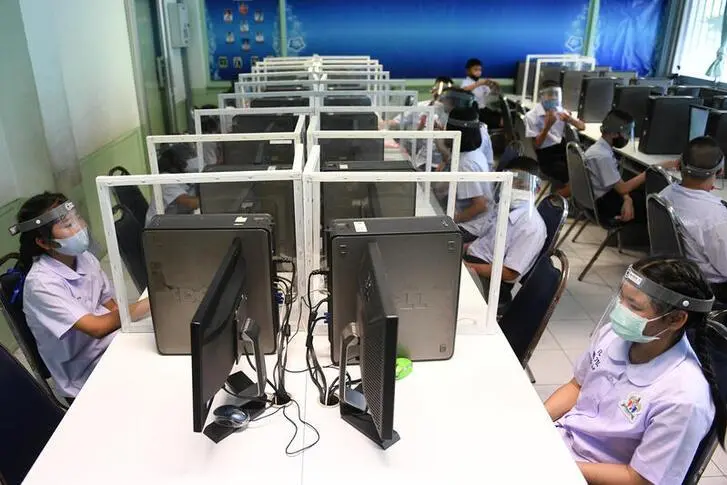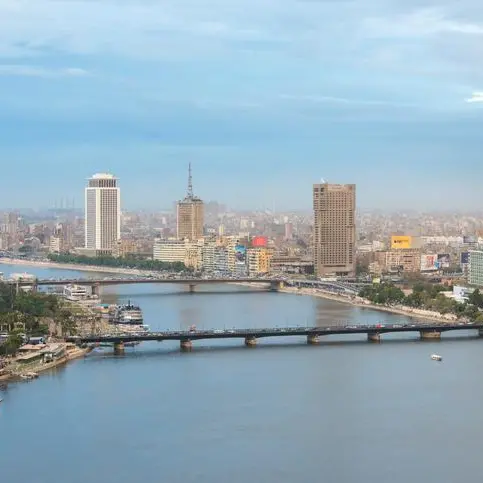PHOTO
Thanks to online platforms and tools, most ministries of education and universities around the world were able to save the 2019-20 school year after the coronavirus disease (COVID-19) forced many people to shelter at home.
Now that the world is slowly, albeit not quite surely, returning to quasi-normal, many decision- and opinion-makers are asking how education can take place safely and effectively in the fall.
The equation to balance safety with effectiveness is difficult to solve satisfactorily. The first question we must ask is whether it is safe to reopen schools and colleges in September. The answer is it depends. There are a number of factors that need to be considered, including location (country and city); the size of the institution; the available space, which will determine how crowded it will be; student behavior; and what precautionary measures will be enforced, such as face masks, social distancing, regular testing and contact tracing.
Secondly, does online teaching work well enough to represent a reasonable alternative to the classroom? How did it go this past spring? What have we learned from that experience, bearing in mind that we were completely unprepared for it at that time.
Several surveys have been conducted among students to gauge their satisfaction with the online teaching they received. In one poll, which covered 12 universities in the US, only 63 percent of students said they would enroll in the fall if their institution continued with the online scheme, compared with 92 percent if lessons returned to normal.
Many of the respondents said they had suffered from screen and online fatigue/burnout, and that they missed the classroom atmosphere and close interaction with professors and fellow students. Most of them said they could not perform well in online tests, and many had frustrating technical difficulties.
Professors had other issues. Perhaps the thorniest one involved testing, where they found it to be very difficult to confirm the identity of examinees, whether they were taking a formal test or writing and submitting an essay or project, while preserving standards of attainment.
Many professors also lamented the absence of body language, which is so important in teaching. Some courses, especially those normally conducted in labs or in the field, could only be conducted in a diminished form.What, then, shall we do in the fall? The Chronicle of Higher Education, which is widely read and highly regarded, posed that question to 23 professors, administrators and students, including a freshman about to start his studies. Their one-page answers covered a spectrum of views that stressed, for example, “the moral imperative,” “the precautionary principle,” the need for “a rational and ethical assessment of the benefits, costs and risks,” and the importance of “keeping various constituents in mind.”
Many universities and education ministries are exploring options and discussing the possibilities with various constituents, including students, parents and professors. In the US and other countries that have experienced renewed COVID-19 spikes recently, people are worried about the risks of sending young people into confined spaces for hours on end, even if social distancing rules are strictly implemented. Can we guarantee that all students will behave properly in dorms, cafeterias and other shared living spaces?
Here are a few examples of the measures that are being considered to address people’s fears. At Florida Agricultural and Mechanical University, resident assistants will schedule shower times for students to avoid washrooms becoming crowded. The University of Georgia will provide every student with two washable cloth face masks and a thermometer. In addition, continuous cleaning schemes will have to be implemented.
For universities in the Middle East, there is an added complication: A sizable proportion of the student body comes from abroad, often encompassing dozens of countries. Will travel restrictions drastically disrupt college enrollments, and therefore budgets? How many faculty and staff might be dismissed as a result because they are not needed?
Many institutions are considering a “hybrid” model of teaching, whereby some learning activities, lab work and exams for example, are conducted on campus and others, such as lectures and tutorials, take place online.
Another option is to conduct classes with large numbers of students completely online, and others that have fewer students in person. The University of California, Los Angeles has announced that 80 percent of classes will be online, compared with only 20 percent at the University of Texas at Austin.
An alternative possible solution is to divide the semester into two phases: Online and then in-person, or vice-versa.
In late November, millions of people in the US traditionally travel, often great distances, to spend time with family at Thanksgiving. This year, this represents a big risk that the virus might be spread across the country. Many universities are therefore considering asking students to remain where they are after Thanksgiving and take their classes online.
Conversely, in places where the number of infections is still high in September, universities might start classes online and reopen for in-person lessons only when the risks are reduced.
Yet another proposed solution would divide students into two groups that would alternate between online and in-person lessons on specific days or weeks. This would help to keep on-campus numbers low at all times.
Professors, too, could be divided into those for whom the virus poses a high risk — those over the age of 55, say — and those for whom the risks are low. The high-risk group would be restricted to online lessons only.
Whatever options are chosen, we should all be ready for an emergency or a sudden local outbreak. There is no obvious solution that can be adopted and implemented at every institution; there are simply too many factors at play and they vary greatly from one location to another.
Let us proceed with caution and vigilance, and be ready to react quickly and appropriately. Education is our most precious asset, more than money or property; we therefore need to do everything we can to protect it from the pandemic.
- Nidhal Guessoum is a professor at the American University of Sharjah in the UAE. Twitter: @NidhalGuessoum
Copyright: Arab News © 2020 All rights reserved. Provided by SyndiGate Media Inc. (Syndigate.info).












